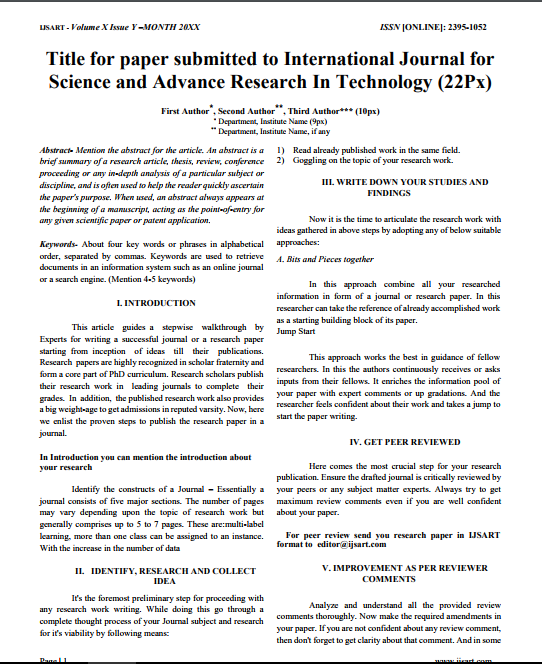A NOVEL APPROACH TO TEST OP-AMP IC-741 USING ARDUINO |
Author(s): |
| Advita A Gaonkar |
Keywords: |
| IC-741, Op-Amp, Testing, Arduino. |
Abstract |
|
Integrated circuits are the main component of each and every electronic circuit which is used for wide variety of applications. Developing from 1960’s to the present technology the formation of integrated circuits have eased the process of constructing a circuit on PCB, with most of components imbibed during the construction of IC. It has also raised a problem to test and then implement IC’s in circuits. As the faulty IC’s malfunction the operation of the network. Indeed it is lot tedious work to debug the circuit and confirm whether the circuit is creating problem or the IC’s itself is not working. So to come up with a solution to these sorts of problems we intend to design and implement an embedded system which would confirm whether the IC’s under consideration is working properly or not. In the proposed concept the IC-741 is connected as a voltage follower. The square signal generated from Arduino Microcontroller is applied to the non inverting terminal of the Op-Amp (PIN 3). The inverting terminal is connected to output of the Op-Amp i.e. (PIN 2 is connected to PIN 6). Proper biasing voltage of is applied to the biasing terminals under these connections Op-Amp circuit is expected to work like a voltage follower. If the IC under consideration is a “Working IC” then input square pulse appears at output terminal , Else the output will be null. The Arduino monitors the output terminal of the Op-Amp and if the signal read by the Arduino is say “101010101010…..” the Op-Amp IC is working one and if the signal received is “000000000…..” the Op-Amp IC is not working. An LCD is interfaced to Arduino to display the working condition of Op-Amp. An audio interface using DF player is also provided so that usage of this embedded system becomes easier. |
Other Details |
|
Paper ID: IJSARTV Published in: Volume : 4, Issue : 1 Publication Date: 1/14/2018 |
Article Preview |
|
Download Article |


